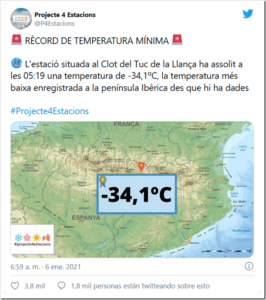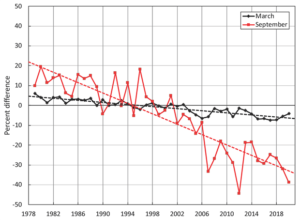by P. Homewood, Jan 6, 2021 in NotaLotofPeopleKnowThat
The storm ‘Filomena’ leaves the lowest temperature ever recorded in the Iberian Peninsula: –34.1C
Temperatures in Spain this winter are reaching maximum levels. This week has been very cold, with frosts in much of Spain even in areas very close to the coast. The early morning of this Wednesday was marked by intense cold and snowfall. The thermometers show such low figures that the temperature at the Clot de la Llança (Alto Aneu) weather station stands out: – 34.1 degrees.
It is the lowest temperature in the Iberian Peninsula since there are records. Information provided by the Parc Natural de l’Alt Pirineu (managed by Meteo Pirineo and Meteo Valls d’Àneu). And it has also been confirmed by AEMET. This temperature, 34.1 degrees below zero, is a record since the last time something similar was recorded was on February 2, 1956 with -32.0ºC in Estany-Gento, in the province of Lleida,
https://www.20minutos.es/noticia/4533488/0/borrasca-filomena-record-temperatura-minima-34-1-grados/
…
See also here




